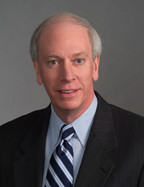 |
John Gollan, M.D., Ph.D. |
The 8 percent increase will boost UNMC’s first-year class from 120 to 130 students.
The larger class is in response to a predicted shortage of physicians and a national call by the Association of American Medical Colleges (AAMC) to expand student enrollment.
“We are pleased to do our part in responding to the AAMC’s charge, while, at the same time, maintaining the high-caliber education and clinical training that allows us to graduate competent and compassionate physicians,” said College of Medicine Dean John Gollan, M.D., Ph.D.
Over the next two years, College of Medicine leaders will review the available applicant pool and consider additional increases with a goal of 140 matriculants per year, or an overall class size increase of approximately 16 percent over three years.
The AAMC’s Council on Graduate Medical Education (COGME), a national advisory body that makes policy recommendations regarding the adequacy of the supply and distribution of physicians, has predicted that if current trends continue, demand for physicians would significantly outweigh supply by 2020. By the council’s calculations, there will be an estimated 970,000 practicing physicians in 2020.
The COGME anticipates a physician shortage because the U.S. population is expected to grow by 50 million by 2020; there is an aging workforce (1 in 3 active doctors are older than 55); people older than 65 will double between 2000 and 2030; and the new generation of physicians is working fewer hours.
“It takes a long time to train a student, so we have to be proactive in addressing this,” said Jeffrey Hill, M.D., associate dean for admissions and student affairs, UNMC College of Medicine.
The AAMC suggested a 30 percent increase in class size nationwide — from existing and new U.S. medical schools — which would yield 5,000 more graduates per year by 2015.
After an extensive review, UNMC leaders voted to increase class size by 8 percent, effective in the fall of 2008 with the opening of the new Michael F. Sorrell Center for Health Education at the corner of 42nd and Emile streets. The $52.7 million state-of-the-art facility will be the 134,183-square-foot home for the College of Medicine.
Many factors went into deciding whether to boost class size, said Gerald “Jay” Moore, M.D., senior associate dean for academic affairs, UNMC College of Medicine, including the availability of qualified applicants and clerkship opportunities, adequate space and the number of faculty.
“The bottom line is we want to provide training for qualified Nebraska graduates,” Dr. Moore said.
For nearly 30 years, UNMC’s medical school class size has hovered at approximately 120 students. During the mid-1970s, the College of Medicine offered an accelerated course, which allowed students to complete in three years instead of the traditional four-year curriculum. Up to 150 students were accepted per year. The accelerated course was made possible because of federal government funding that boosted class sizes to offset a national shortage. The option lasted a few years until funding stopped.
“Increasing our enrollment is the right thing to do,” Dr. Moore said. “There’s a need in the country and we’re trying to help. We are going to have an increasing number of elderly and retiring physicians and because of that we’re going to need more physicians in the state.”
Approximately 40 percent of graduates stay in Nebraska for residency training, Dr. Moore said.
Mark Edwards, M.D., assistant dean of admissions, UNMC College of Medicine, said recruiters would fill the additional slots through a four-tiered recruitment strategy that focuses on 1) qualified Nebraska residents; 2) special existing programs that assist rural, non-traditional, minority and disadvantaged students; 3) the M.D./Ph.D. scholars program; and 4) recruitment of high quality out-of-state residents.
“UNMC is helping add additional physicians to the waning workforce, while trying to tailor our program to meet the needs of Nebraskans,” Dr. Edwards said. “The increase in class size is commensurate with our current class size, available resources, the available applicant pool and the needs of Nebraskans. We hope it also leads to a more diversified group of future physicians.”
“Our first mission is to recruit and retain the best Nebraska students,” Dr. Hill said, noting that more than 85 percent of UNMC’s matriculating medical students are from Nebraska. “We have to evaluate carefully and make sure we continue to graduate very qualified, competent physicians.”